Top 12 Best Places in Italy You Must Visit
 |
| Photo: Side Serve |
| Table of Content |
Italy offers a magnificently rich array of sumptuous natural scenery and numerous opportunities to get out into nature. Cinque Terre, Sardinia, and the Dolomites all boast incredible landscapes and fantastic hiking routes.
You could spend your time in this culturally rich land learning about the lives of the Romans, discovering the destruction caused by Mount Vesuvius at Pompeii, or simply lazing alongside one of the many Italian lakes and languishing in the opulence of the Amalfi coast. Italy offers so much to see and do that it would take a lifetime to explore. Plan your trip to this wonderful Mediterranean travel destination with our list of the best places to visit in Italy.
Related: Top 10 Must-visit Gorgeous Coastal Towns in Italy
12. Pompeii and Herculaneumaken
In AD 79, Mt. Vesuvius erupted violently and suddenly, engulfing the thriving Roman city of Pompeii and encasing it for more than a millennium in six meters of ash and pumice-stone. The city remained frozen in time until excavations that began in the 18th century uncovered more than half of its buildings and public spaces.
The same eruption also engulfed the city of Herculaneum, but this time in molten lava, not ash. So instead of raining down and crushing buildings with its weight, the lava flowed in and filled the city from the ground up, supporting walls and ceilings as it rose, and preserving them in place. Also preserved in this airtight seal were organic materials, such as wood, textiles, and food, giving a more complete picture of life in the first century.
11. Milan
Nearly destroyed from heavy bombing during WWII, Milan has since reconstructed and now shines as one of the wealthiest cities in Europe. Widely regarded as a mega fashion center teeming in designer shops, Milan also attracts many to its surviving world famous treasures like Leonardo da Vinci’s painting, The Last Supper, the La Scala Opera House, the Castello Sforzesco and one of the world’s largest Gothic cathedral.
Located in Italy’s northwestern region of Lombardy near the Alps and the scenic Lake District, Milan is a fast-paced city excelling in business, shopping and football. More of a glamorous city with modern architecture and attractions, Milan appears less Italian compared to the country’s predominantly historic cities.
10. Pisa
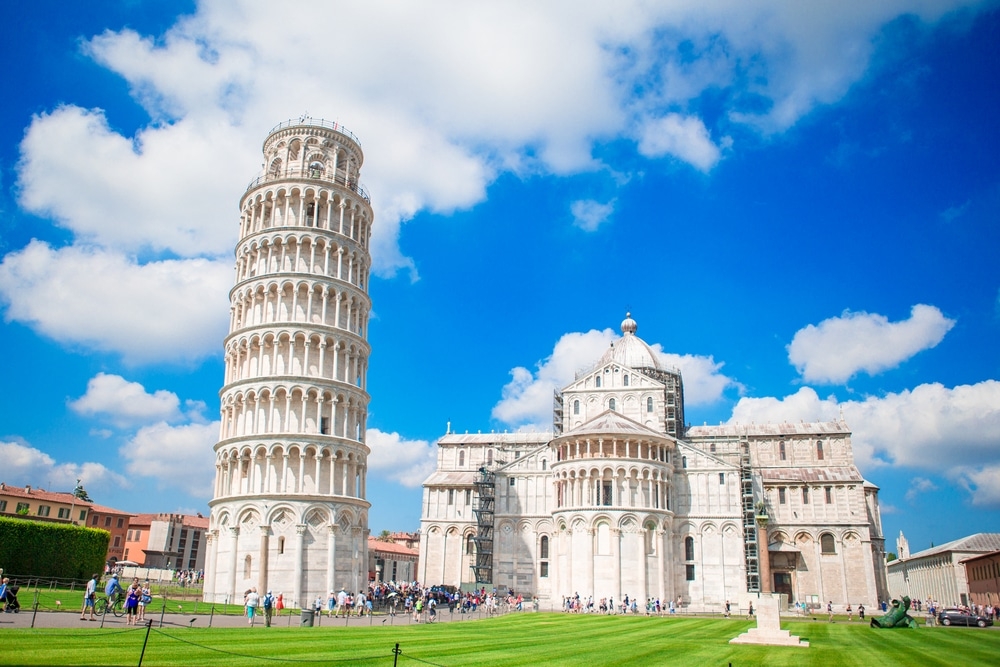 |
| Pisa Tower. Photo: The Crazy Tourist |
Located along the Arno River in the northwestern region of Tuscany, the city of Pisa still bears the striking remnants of its former golden days as a commercial empire during the Middle Ages. While the Leaning Tower is a must see, visiting this city only to take a photograph of it’s most popular landmark is like looking at one tree and missing the whole forest. Pisa is so much more than just the Leaning Tower.
Surrounding the famous landmark is one of Italy’s most beautiful squares, the Campo dei Miracoli, or Field of Miracles. This remarkable plaza contains magnificent examples of Italian Renaissance that include the Duomo Cathedral, Baptistry and Camposanto Monument, all of which contain marble features, sculptures, frescoes and historic relics. Sprinkled throughout the plaza are various shops selling souvenirs and bakeries offering tasty biscotti.
Beyond the Field of Miracles, the beauty of the Arno River is what often leaves a lasting impression on many tourists. Because Pisa is pided by the river, there are several charming bridges connecting one side to the other such as the Ponte di Mezzo. The riverbanks on each side present a picturesque setting of residential houses, impressive buildings and greenery.
With 60,000 students, the University of Pisa provides the city with an atmosphere of youth and animation. The streets and waterways of Pisa often play host to lively cultural events such as the Luminara Festival, the Regatta of the Ancient Maritime Republics boat race, and the Game of Bridge, a friendly, medieval contest between the city’s two sections.
9. Italian Lake District
The Italian Lake District stretches across Northern Italy. The southern ends of most of the lakes are relatively flat but the northern ends are mountainous as the lakes reach deep into the Alps. Popular with tourists for over 100 years, the Italian Lakes combine good weather with attractive scenery.
Starting in the west is Lake Maggiore, a narrow lake known for its lush vegetation and picturesque islands. The 40-mile-long lake sits on the southern side of the Alps and extends into the Canton of Ticino in southern Switzerland. Its most popular attraction is Isola Bella, a charming island famed for its royal palace and immaculate gardens.
Catering to celebrities, royals, and affluent visitors, Lake Como is famous for its lavish, dramatic setting and extravagant Renaissance villas. At the heart of the lake is Bellagio, a romantic town with cobbled streets and brightly-colored mansions.
Lake Garda, Italy’s largest lake, offers the perfect mix of history, culture, and outdoor adventure. Stroll through lemon groves in Limone, windsurf in Riva del Garda, or explore ancient castles in Malcesine. On the southern end of the lake sits Sirmione, a popular resort town with Roman ruins, medieval castles, and thermal baths.
Lake Iseo is one of Italy’s lesser-known lakes, although it’s home to the largest lake island in central Europe. Monte Isola is dotted with quaint villages and several stunning 15th-century churches.
8. Sicily
The largest island in the Mediterranean, Sicily lies just across from the southern tip of Italy, on the narrow Strait of Messina. Due to its location, it has long acted as a crossroads, so is very distinct from the rest of the country in terms of its history, culture, and cuisine.
This is best exemplified by Palermo, Sicily’s capital and largest city, which was remarkably founded more than 2,700 years ago. Since then, it has been ruled by everyone from the Phoenicians and Romans to the Arabs and Normans, with each civilization leaving behind artistic and architectural treasures and culinary influences.
In addition, a wealth of important archaeological sites lie scattered around the island; these now make for some of Sicily’s most popular tourist attractions. The impressive ruins of the Ancient Theatre of Taormina and the age-old edifices in the Valley of the Temples date to the Ancient Greeks; others, such as the mountaintop castles of Erice, were built in medieval times.
Renowned for its rugged beauty, Sicily’s rugged cliffs and secluded beaches are lined by sparkling waters, while fertile farmland and mountains dot its interior. Towering over everything is Mount Etna, one of the world’s most active volcanoes and the highest peak in Italy south of the Alps.
7. Siena
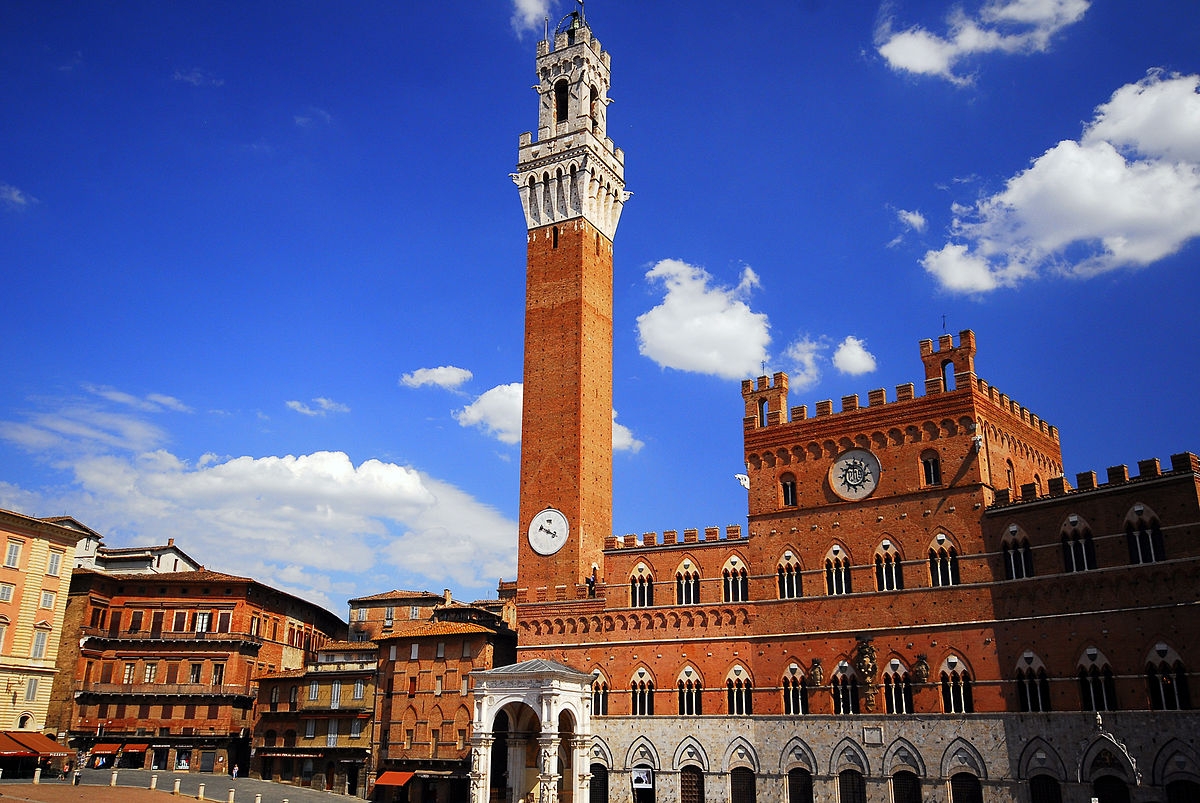 |
| Siena. Photo: Wikimedia Commons |
Established upon three hills in the heart of Tuscany, Siena offers tourists a step back into the Middle Ages with its well-preserved historic center and medieval horse racing tradition, famously known as Il Palio. Formerly a wealthy city, the historic center of Siena is one of the most popular places to go in Italy as it still retains many of its stunning works of art and architecture from that time period.
Siena’s Piazza del Campo is regarded as one of the finest Medieval squares in Europe. This fan-shaped plaza is noted for its architectural treasures such as the Fountain of Joy, the Palazzio Pubblico and the Mangia Tower. Another of Siena’s architectural gems is its Duomo, a stunning black and white cathedral of Italian Romanesque design with exquisite features like marble floors, stained glass, sculptures, paintings and carvings. The piazza is also a good place to relax, watch people and enjoy the local delights of wine, coffee, pizza, focaccia and gelato.
Hosted twice every summer in the Piazza del Campo, the Palio horse race draws huge annual crowds. This 700-year old tradition involves representatives from 17 different districts racing bareback on the cobblestone plaza. Siena is also home to one of Italy’s oldest public universities, the University of Siena, widely recognized for its Schools of Medicine and Law.
6. Lake Como
Italy's most beautiful lake, Como has been the favorite summer retreat of the rich and famous since ancient Romans fled Milan's summer heat to cool off in villas along its steep shores. Later villas decorate its tightly clustered towns, especially pretty Bellagio, artfully set on a point where the three narrow arms of the lake meet.
A microclimate makes Como's western shore temperate even in winter, so the white peaks of the Alps just to the north can be viewed between palm trees and camellias. Don't overlook the town of Como, on the southern shore, well worth a stop before boarding a steamer to explore the lake.
Just to the west of Lake Como is Lake Maggiore, with its own attractions; to the east is Lake Garda, a summer playground filled with water sports and other things to do.
5. Amalfi Coast
Situated in Italy’s southwestern region of Campania, the Amalfi Coast is known for its extraordinary beauty that makes it one of Italy’s top tourist destinations. Stretching 30 miles along the southern side of the Sorrento Peninsula, the Amalfi Coast is prized for its picturesque coastline that features shimmering bays, craggy cliffs, lemon tree gardens, multicolored villas and ritzy resorts.
One of the most romantic and posh towns along the Amalfi Coast, Positano‘s many calling cards include beautiful pebbled beaches, pastel houses, scenic mountains, waterfalls and a 13th century Black Madonna.
One of the larger towns, Amalfi, features lovely plazas lined with restaurants and souvenir shops. Perched on a hill overlooking Amalfi, the town of Ravello is favored for its beautiful villas of gardens and art works as well as its lively art and music festival. Often called the Painted Town because of its many mural-painted houses, Furore also features an enchanting bay.
4. Tuscan Hill Towns
The undulating landscape of Tuscany is crowned by stone towns whose foundations go back to the Etruscans. Each sits atop a hill, and many still have the castles and towers that once defended their commanding positions.
It's difficult to choose one above the others, as each has its own architecture, art, character, and story to tell. Fairly bristling with towers and enclosed in walls that are largely intact, San Gimignano looks much as it did in the Middle Ages, when it was an important stop on the pilgrims' route to Rome. Volterra was an important Etruscan center before the Romans came and still has remains of both civilizations today. The tourist attractions of Arezzo are the legacy of the many artists, architects, and poets who lived there.
Like Volterra, walled Cortona was an Etruscan settlement and later a Roman one, but adds reminders of its Florentine past as well. Cortona is one of Italy's oldest towns. The proximity of these hill towns to the cities of Florence, Siena, Pisa, and Luca fills Tuscany with a concentration of many of the best places to visit in Italy.
3. Venice
 |
| Venice. Photo: Azamara |
One of Italy’s top travel destinations, Venice is a unique city in that is built upon a lagoon surrounded by the Adriatic Sea. Located in northeastern Italy, Venice is an archipelago of 118 islands all connected by hundreds of beautiful bridges and scenic canals. Of the canals, the Grand Canal is most famous and pides the city into two sections. Picturesque waterways and historic architecture make Venice one of the most romantic cities in the world.
Venice is often crowded and expensive but well worth visiting to see its magnificent landmarks like Saint Mark’s Square and Basilica, Doge’s Palace and Rialto Bridge. One of the most popular things to do in Venice is to take a gondola ride along the Grand Canal. However, it is just as equally enjoyable to ride a vaporetti along the quiet back canals.
Every year, Venice hosts one of Italy’s liveliest Carnival festivals where the streets are filled with people dressed in colorful costumes and masks, and the Grand Canal is packed with fleets of decorated boats and gondolas. A popular souvenir to purchase in Venice is one of the beautifully crafted carnival masks.
There are no cars in Venice, so people either walk or ride the water taxis along the canal system. Travelers should note that Venice frequently experiences high water in the spring and fall.
2. Florence
The capital of Tuscany, Florence is often described as a colossal outdoor museum because of its mass of art and architectural treasures. Internationally observed as the birthplace of Italian Renaissance, Florence is also credited with propagating many artists, inventors, writers, scientists and explorers as well as inventing opera and the florin currency, which lifted Europe from the Dark Ages. Additionally, Florence is known as the home of the wealthy and powerful Medici dynasty that produced several kings and popes, impacting the entire world in a number of ways culturally, economically and politically.
Florence’s hoard of art masterpieces are found all over the city, contained within the large numbers of museums, stunning churches, like the domed Santa Maria del Fiore, and internationally esteemed art galleries like the Ufizzi and Pitti Palace. The Piazza della Signoria, the main square, is home to beautiful buildings and world famous sculptures like Cellini’s Perseus with the Head of Medusa, Ammannati’s Fountain of Neptune and Michelangelo’s Statue of David.
Walking is the best way to see the major sites in the city center. Some of the best places to walk include the Ponte Vecchio, a beautiful bridge pning the Arno River and featuring a number of jewelry shops. Florence’s markets are another good place to walk. The San Lorenzo markets are among the most popular where tourists can find an array of locally grown foods and handcrafted goods.
1. Rome
Formerly the capital of the Roman Empire, Rome today is the government seat and capital city of Italy. Located in the country’s central region of Lazio, Rome is a vast and complex city that is both historic and modern at the same time. Best known for housing ancient Roman structures and the Vatican City, Rome has endured for more than 2,500 years as an important center for culture, power and religion.
Rome is pided into several districts with its center, the Colosseo district, containing the most ancient attractions like the Colosseum, the Forum of Augustus, Capitoline Hill and the Roman Forum. On the outskirts of the center is Old Rome, featuring the Pantheon, stunning cathedrals, plazas and Renaissance architecture. The Vatican is well known for St. Peter’s Basilica, the Apostolic Palace and Sistine Chapel.
There is so much to see and do in Rome, that it could take months to see it all. However, one way for tourists to experience the best of the city is by taking a hop-on, hop-off bus tour. This bus tour stops at major places of interest and top museums, and tourists are free to get off and on as they wish.
 What Is The Capital of Italy: History, Facts, Best Places to See What Is The Capital of Italy: History, Facts, Best Places to See With the unification of Italy, Rome was chosen capital of the country in 1870. Nowadays, it is one of the most visited cities in the ... |
Top Interesting Facts about Italy♦ Its proper name Repubblica Italiana (Italian Republic), Nickname: “Bel Paese” which means a beautiful country. ♦ Rome its capital city was founded in 753BC. ♦ The currency is the Euro. Prior to 2001, it was the Italian Lira ♦ Religion is predominantly Christian (Roman Catholics 90%) ♦ More than 98% of Italian’s can read and write. ♦ Italians eat spaghetti only with a fork The official language is Italian as well as German and in some regions in Northern Italy. ♦ Mozzarella: Italian cheese balls, originally made from buffalo milk ♦ Lasagna: layered pasta dish with tomato, mozzarella cheese and mince meat filling. ♦ Gelato: ice-cream is an Italian invention |
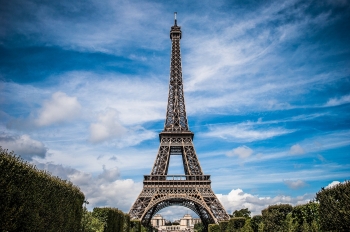 | Top 12 Interesting Facts about France You may not Know Is it true that France invented the hot air balloon? And is it really illegal to kiss on train platforms? Find out with these 12 ... |
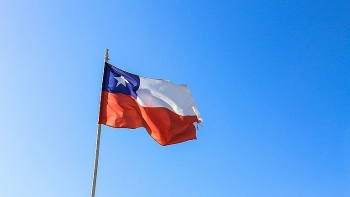 | 12 interesting facts you may not know about Chile There is a tale that Chileans are fond of telling tourists. When God created the world, they say, he had a little bit of everything ... |
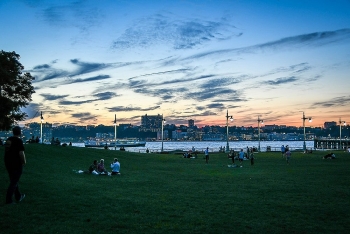 | Top 5 Things You Must Do When Visiting New York City Have you ever walked around New York city and experienced amazing activities here? Do you know what to do when discovering this beautiful and busy ... |


























